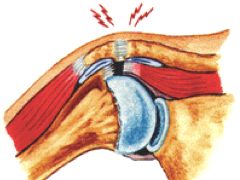 At first she thought she was feeling routine soreness, something that Donna Grubb-Hewlett was pretty sure she could muscle through. But when she heard a pop in the back of her leg during a February morning warm-up, she knew she had a more serious problem.
At first she thought she was feeling routine soreness, something that Donna Grubb-Hewlett was pretty sure she could muscle through. But when she heard a pop in the back of her leg during a February morning warm-up, she knew she had a more serious problem."[The soreness] was something I thought I should expect," said Grubb-Hewlett, who is training for her first marathon this summer in San Diego. "But this didn't go away."
Hamstring injuries are among the most common to strike casual athletes and gym regulars — whether it's the sudden tweak that pulls you up short in a softball game or a more profound "Level 3" tear that shreds fiber deep within the muscle and requires months of rehabilitation. In the most serious cases, the muscle and tendon can snap away from the bone and must be surgically reattached.
Hamstrings are complicated muscles — they're sets of three that begin at the hip and extend down the back of the leg to just below the knee — responsible for a lot of the body's motion. They flex the knees and pull the hips forward when you are walking and jogging.
Sprints seem to factor in some hamstring injuries, said John McCarthy, an assistant professor with the University of Alabama-Birmingham's Department of Physical Therapy. Such motions force the hamstrings to contract even as they lengthen with forward momentum, establishing an internal tug of war.
"That is where you get the peak stretch," McCarthy said.
Weakness of the muscle almost certainly is a cause of injury, and some doctors and researchers feel that strength imbalances may also be to blame. In many people, the quadriceps, at the front of the leg, are substantially stronger than the hamstrings, perhaps setting up the back of the leg for injury. Postural problems can also add strain.
Fortunately, a pulled hamstring is not likely to be a career-ender. Many Level 1 tears can be treated at home with ice, a compression bandage, elevation (to keep the swelling down after the injury) and a few days of rest until the pain subsides. After that, a gradual return to stretching and exercise will ensure that the muscle heals properly.
Though Grubb-Hewlett's was considered a Level 1 tear, she is working with a local chiropractor in hopes of recovering more quickly and completing her marathon program with the Washington, D.C., area Leukemia & Lymphoma Society's Team in Training group.
Her chief recommendation: Swallow your pride and get help early. Though pain will limit what can be done at first, McCarthy said side-to-side exercises such as the "grapevine" — a series of crossover steps popular in aerobics classes — can be done slowly to start the recovery.
Gradually, hamstring stretches and strengthening exercises can be reintroduced: The National Strength and Conditioning Association has prepared a guide to some of them ( www.nsca-lift.org/Perform/articles/060305.pdf).
To target the hamstrings, Frank Holmes, director of the sports medicine program and Georgetown University Hospital, recommends leg curls, which can be done at home by securing a resistance band to a door or piece of furniture, looping it around the ankle, then flexing the knee. (Use a chair or wall for balance.) If you are using a leg-curl machine, he recommends isolating one leg at a time and slowing the "eccentric" phase of the exercise — when the weight is being released — since hamstrings seem to get injured as they are being extended.
For those without access to a gym, bodyweight squats (with knees at shoulder width and weight over your heels, lower yourself until your thighs are parallel to the ground, then come back up) and lunges (step out with one foot, lower the back knee close to the ground, then come up, keeping the front knee over the ankle) will also help.

No comments:
Post a Comment